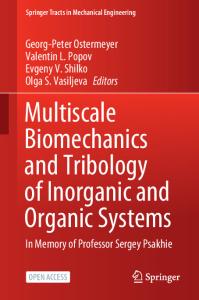Micro-hardness and wear behavior of AA2014/Al 2 O 3 surface composite produced by friction stir processing
- PDF / 4,250,164 Bytes
- 16 Pages / 595.276 x 790.866 pts Page_size
- 49 Downloads / 318 Views
Micro‑hardness and wear behavior of AA2014/Al2O3 surface composite produced by friction stir processing Shalok Bharti1 · Nilesh D. Ghetiya1 · Kaushik M. Patel1 Received: 9 July 2020 / Accepted: 23 September 2020 © Springer Nature Switzerland AG 2020
Abstract The present study aimed to improve the micro-hardness and wear properties of AA2014 aluminum alloy. Surface composite of AA2014 was produced using A l2O3 as reinforcement by friction stir processing (FSP) technique. FSP was performed by using a constant traverse speed of 40 mm/min and two rotating speeds of 1000 and 1400 rpm. After FSP, the average grain size of AA2014 was reduced from 21.9 µm in base material to 9.2 µm in FSP with a rotating speed of 1000 rpm and 3.8 µm in FSP with rotating speed of 1400 rpm. Optical microscopy showed that the Al2O3 reinforcement particles were distributed homogeneously in AA2014 after FSP. The micro-hardness test showed that the hardness property in AA2014/Al2O3 surface composite was improved after FSP and was increased with an increase in rotating speed. The micro-hardness was improved by 30% after FSP. The wear test revealed that both the wear performance and coefficient of friction (COF) were improved after FSP. The COF was improved from 0.27461 in base material to 0.22570 in FSPed samples. Surface roughness test showed that the sample with more micro-hardness showed better surface roughness as compared to the other samples. Keywords Friction stir processing · AA2014 · Al2O3 · Surface composites · Micro-hardness · Wear
1 Introduction Aluminum alloy 2014 (AA2014) is one of the commonly used alloys in areas like aerospace, military equipment, etc. However, due to its low hardness and less wear resistance, the use of AA2014 is limited in the industry. To overcome the limitations, various methods were proposed by various researchers [1–3]. To study hardness property, Dwivedi et al. [4] produced metal matrix composites (MMCs) by using AA2014 and eggshells waste particulates as reinforcement material. Similarly, Durmus et al. [5] used agehardening on AA2014, whereas Aksoz and Bostan [6] studied the effect of aging and cryo-aging treatment on microstructure and hardness of AA2014–SiC MMCs. Similarly for improving wear behavior, Canakci et al. [7] used an artificial neural network to predict wear behavior of
AA2014/B4Cp MMCs, whereas Nagaral et al. [8] investigated wear behavior of AA2014–ZrO2 nano-composite by using a two-stage stir casting process. All these studies were conducted to improve the limiting properties of AA2014 alloy. It has been seen that most of the methods included the production of composite material in which some reinforcement particles were added with the AA2014 alloy; but in case of bulk composites, the properties like toughness and ductility also reduce. But if the need is only to enhance the surface properties like hardness and wear, then a new technique in which only the surface of the material is converted into composite could be used. In this way, only the surface composite is made and the r
Data Loading...











